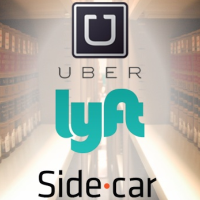Ride-Sharing Incidents/Collisions Steadily Increasing

If there is one thing ride-sharing companies pride themselves on, it’s their technological prowess in utilizing vast quantities of customer and contractor data. They do not, however, share very much of it with government regulators, who are missing a unique opportunity to see how a company of the future is really performing, almost in real time.
Some of what transportation network companies (TNCs) Uber, Lyft, Sidecar, Summon, Wingz and Shuddle do hand off to the state was published this month in a report (pdf) by the California Public Utilities Commission (CPUC). Almost missing was a big chunk of data about UberX from the big dog, Uber, including stuff like a zip-code breakdown of accidents.
An administrative law judge recommended the CPUC fine Uber $7.3 million and suspend its license in July. The word “failed” appeared 21 times in the judge’s 96-page ruling. Uber said it was protecting trade secrets.
A September response (pdf) by the CPUC—to the garbage spreadsheets Uber gave the judge and the company’s appeal of his finding—called it “outright defiance.” The company “should not have wasted Staff’s time producing nonresponsive datasets and submitting data request responses that claimed that those nonresponsive datasets were responsive.”
But then the CPUC softened up in the next paragraph and said “at best” . . . the company’s response could be “considered indifference to the Commission’s rules.” Uber eventually submitted most of the data sought. A pair of Pennsylvania state judges recommended Tuesday that the state’s PUC fine Uber $50 million for not turning over requested data to the commission.
The CPUC ride-sharing report, presented to the public earlier this month, does not include much-sought information on how the companies serve disabled passengers and people in disadvantaged areas. The commission said it is still evaluating the numbers that were turned in.
The report shows a steady increase in “incidents/collisions” per million miles between September 2013 and July 2015. For each of the first four months, the number was below 3. Except for a few months, the rate has steadily climbed and was over 18 most recently.
Juan Matute, associate director of UCLA’s Institute of Transportation Studies, told KQED, “That would be indicative of TNCs being less safe as they scale up.”
The most common incident/collision, more than 300, occurred when a passenger opened a door into traffic, nailing a bicyclist, runner, skateboarder or other unfortunate passerby. Making vehicular contact with a pedestrian or bicyclist was next, at more than 200.
But customers should give special attention to the third most prevalent reported incident/collision—the driver “rolled” over the passenger’s foot more than 100 times.
Around one-fourth of the incident/collisions resulted in a payout, which averaged $6,500, by the TNC’s insurance carrier
The report shows a steady increase in ridership between September 2013 and July 2015. During that period, 113.3 million rides in California were accepted, while 5.5 million were declined. The acceptance rate was 93% the first month measured and 97% in each of the last two months.
The average ride was 5.4 miles, with total mileage of 612.6 million. Those riders paid $1.6 billion for the service.
–Ken Broder
To Learn More:
New California Data on Ride Services Reveal Rise in Collisions and Incidents (by Bryan Goebel, KQED)
Public Utility Commission Fines Uber $50 Million for Defying Regulators’ Authority (by Eric Boehm, Pennsylvania Independent)
Uber Faces $7.3-Million Fine and Suspension in California for Not Sharing Info (by Ken Broder, AllGov California)
Summary of Transportation Network Companies’ Annual Reports 2014 and 2015 Submissions (California Public Utilities Commission) (pdf)
- Top Stories
- Controversies
- Where is the Money Going?
- California and the Nation
- Appointments and Resignations
- Unusual News
- Latest News
- California Forbids U.S. Immigration Agents from Pretending to be Police
- California Lawmakers Urged to Strip “Self-Dealing” Tax Board of Its Duties
- Big Oil’s Grip on California
- Santa Cruz Police See Homeland Security Betrayal in Use of Gang Roundup as Cover for Immigration Raid
- Oil Companies Face Deadline to Stop Polluting California Groundwater





